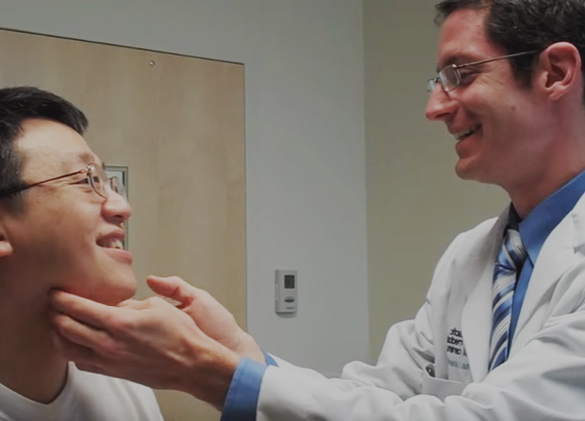See how spreader grafts can be used to improve internal nasal valve narrowing and treat chronic nasal congestion without needing a breathe right strip.
Today's post is the next in our series in which we discuss how functional rhinoplasty surgery can be used to create a surgical breathe right strip effect. Previously we discussed how alar batten grafts and lower lateral crural repositioning can strength and support the external nasal valve. Now let's move onto addressing narrowing of the middle third of the nose.
What is the internal nasal valve?
The internal nasal valve is narrowest part of the entire upper airway (from the nostrils all the way down to the trachea). It is located in the nasal middle third where the upper lateral cartilage attaches to the septum.
This cross sectional schematic shows an even better view of how this valve forms where the upper lateral cartilage meets the septum:

In some people the upper lateral cartilage is relatively weak and ends up becoming narrowed or pinched in this area. As a result, the airflow through the internal nasal valve inside the nose is restricted.

Internally, the effect on the internal nasal valve can be seen in this schematic simulation of right internal nasal valve narrowing:

How a spreader graft can widen a collapsed internal nasal valve
A spreader graft is a cartilage graft that is insert between the septum and upper lateral cartilage, thereby widening the area of narrowing and opening up the internal nasal valve. The cartilage is usually carved from septal cartilage that is removed during a concurrent septoplasty.
You can also see how lateralizing the narrowed upper lateral cartilage can also create improved nasal symmetry.

Spreader graft before and after photos
Enough with the schematics. Let's look at a real-life example of how a spreader graft can improve collapse of the middle third of the nose. I've previously discussed how we used rhinoplasty techniques to treat this patient's bulbous nasal tip. You can see how this patient has significant narrowing of the middle third of her nose. The collapse was worse on her left than right so a thicker graft was carved for her left side.
Her 13 month post-operative photograph on the right shows how spreader graft placement created a much more symmetric, straighter appearing nose. The nasal sidewall shadowing that had resulted from her upper lateral cartilage pinching attracted attention toward her nose. By repositioning her upper lateral cartilages we were able create a more natural brow tip aesthetic line. The end result is that the patient's nose blends much more seamlessly with her face, allowing our attention to be directed toward her eyes.
Related Seattle Rhinoplasty Posts:
- Collapsed nasal middle third from prior rhinoplasty
- How to have a permanent surgical breathe right strip
- How to improve a wide, bulbous nasal tip


